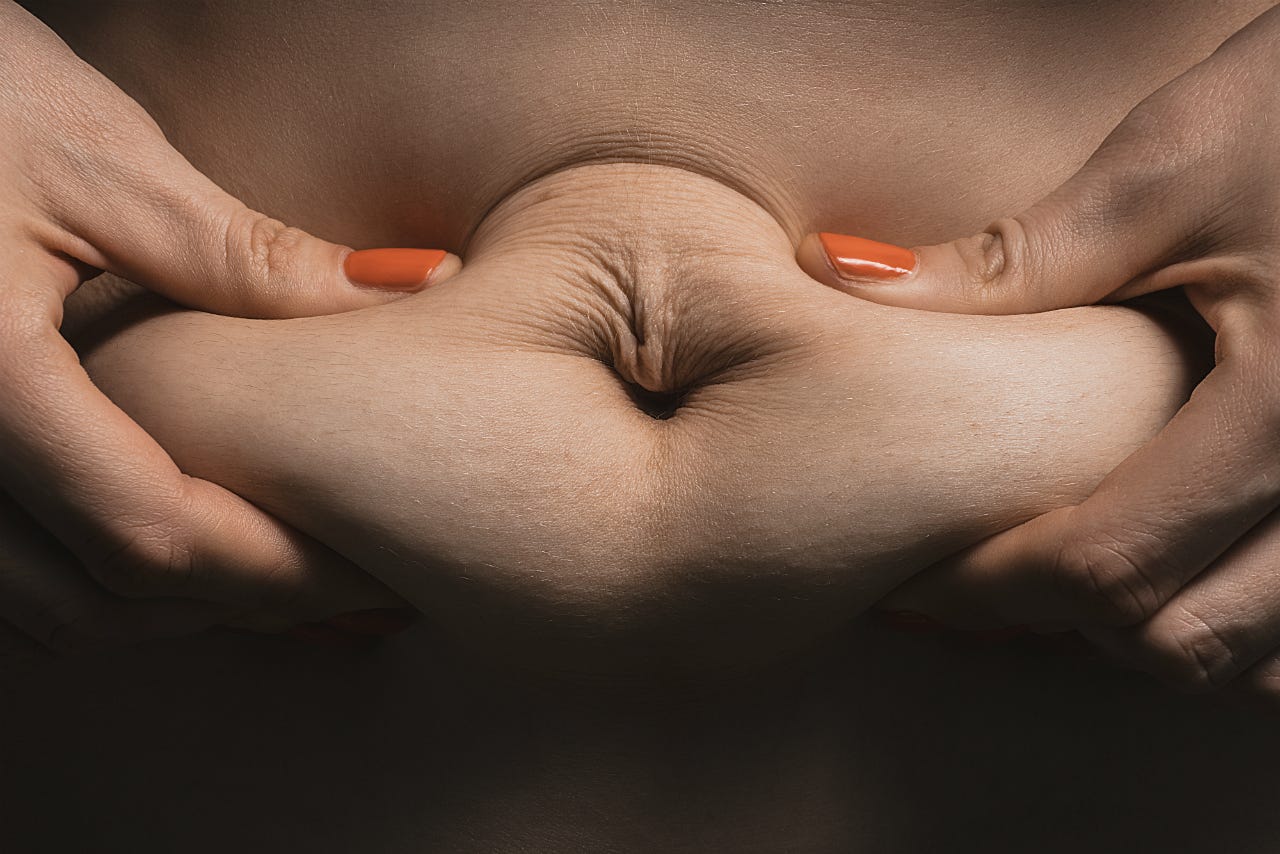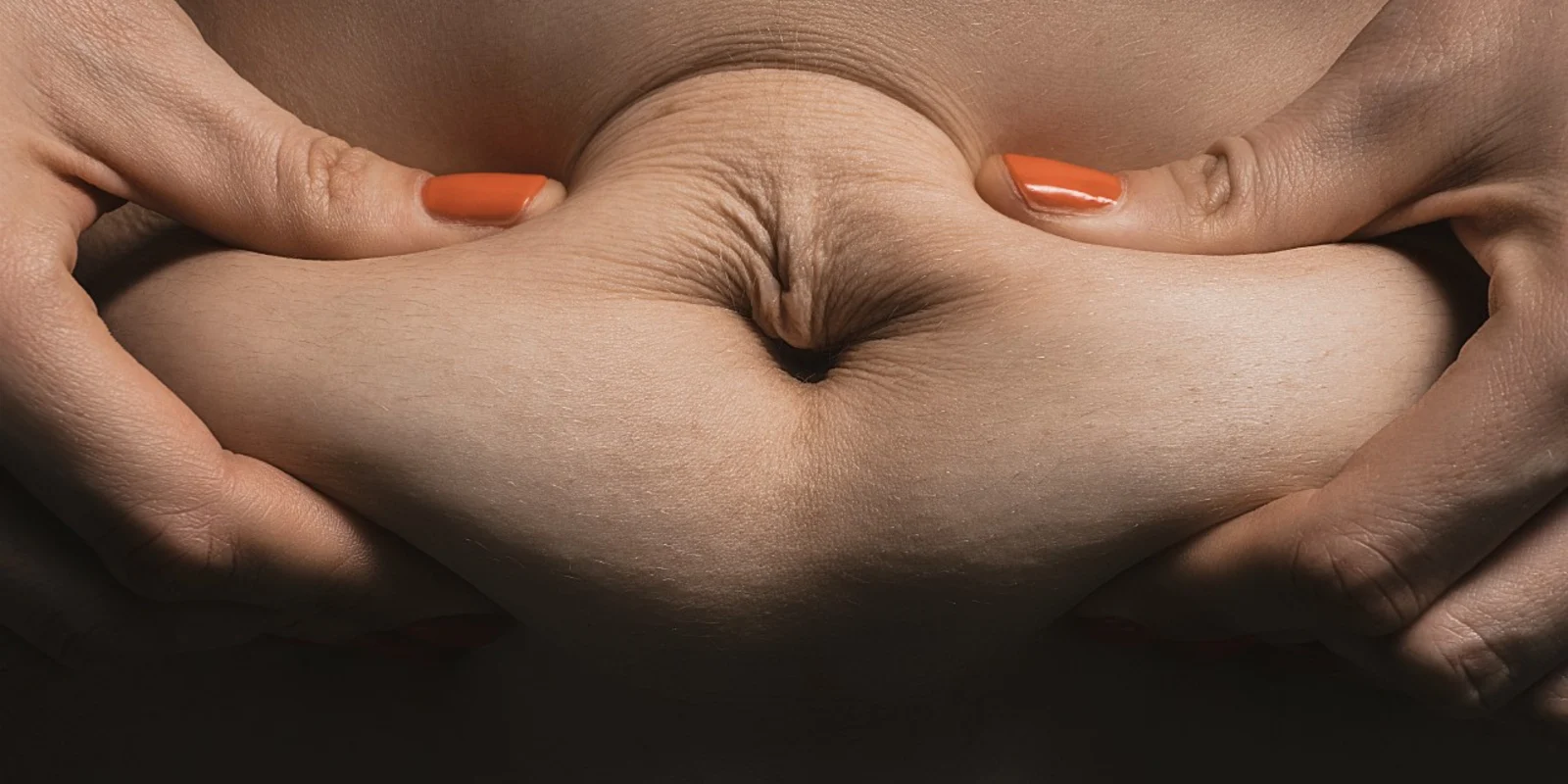
Envision a large, loafy muffin top. Not just a central bulge or even love handles. I’m speaking of an apron of skin and fat that hangs down over many an American’s lower torso and groin. Surely you’ve seen it — you may even have one. Its medical name is the pannus.
I had never heard of a pannus in medical school and I still never hear it mentioned outside of the pathology laboratory. In fact, this article is inspired by conversations I’ve had with friends who know about medicine and who were nevertheless shocked to hear about the pannus. Once you know it has a name, you’ll see it everywhere.
It is a relatively common specimen. Most hospitals treat the pannus as a ‘gross only’ specimen — meaning that we do not look at it under the microscope. We weigh, examine and describe the firm yellow fat attached to the large, elliptical-shaped portion of skin. In the middle of the skin surface is usually the umbilicus (belly button). The pannus is warm, heavy, unwieldy and slippery. If you make a mistake and accidentally cradle the pannus when moving it from your work station, (or to take a picture of it), the lobules of bright yellow fat will stick to your scrubs and leave a greasy imprint.
Our body fat is remarkably like other fats you may have dealt with in the kitchen; it is slippery, greasy and has a shimmery sheen when compressed. Little flecks of fat will stick to your purple gloves, gloves that are shiny with grease. When you touch the forms to write up your description of the pannus, you leave little greasy circles and smudges where the pen will not write. It’s not uncommon to find small bits of other people stuck to your shoelaces or even, shudder, clinging to your hair.
You might assume the pannus is removed as part of overall surgery for weight loss, but that is not the case. The gynecologic oncologists, surgeons who specialize in the removal of female organ cancers, are the ones who send us a pannus. They remove it in order to physically access a cancerous organ hidden down in the pelvis — usually a uterus.
Surprisingly, beyond this mechanical reason for removal, the two specimens (the pannus and the uterus) are linked together for additional, physiological reasons; excess fat, represented by the pannus, is a major cause of cancer involving the uterus — endometrial cancer. But outside of oncologists, pathologists and surgeons, the fact that obesity is a known cause of many cancers is not widely understood.
Obesity is on the rise globally, tripling since 1975. In 2016, more than 1.9 billion adults were overweight and over 650 million were obese. Diabetes and heart disease are the usual medical complications mentioned but other diseases are increased too. Obesity is a risk factor for up to 16 different kinds of cancer, tumors that seem to grow better than average in an overweight body.[1,2]
It seems that we have underestimated fat, thinking of it only as a relatively inert energy storage facility.
Growing evidence, no pun intended, tells us that fat is a metabolic machine, producing unique hormones and molecules and metabolites that rev up the inflammatory response. Cancer scientists call the interactions between fat cells and cancer-prone cells crosstalk — the same signal is picked up by two different cell types[2]. It is a microenvironment of dysfunction and dysregulation. Even without an obvious pannus, our hidden fat, packed around our colon, or increased within breast tissue, may be doing more to promote the growth of cancers than we currently know.
The pannus is just a specimen — a specimen easily dealt with and documented. Done. Luckily, I don’t have to talk to patients about their weight. It’s a nearly Sisyphean task to maintain a healthy weight in this food-indulgent culture. Even knowing all the negative effects of obesity, some pathologists and surgeons are fat — just like their patients. Like many modern diseases, we are better at documenting the damage, but to what effect? If we start to consider fat as a carcinogen, will it help us lose weight? Will it help doctors help others lose weight?
References
- Himbert, Delphan, Scherer, Bowers, Hursting and Ulrich. Signals from the Adipose Microenvironment and the Obesity–Cancer Link — A Systematic Review. AACR — Cancer Prevention Research. September 2017 Volume 10, Issue 9. DOI: 10.1158/1940–6207.CAPR-16–0322
- http://www.who.int/en/news-room/fact-sheets/detail/obesity-and-overweight







